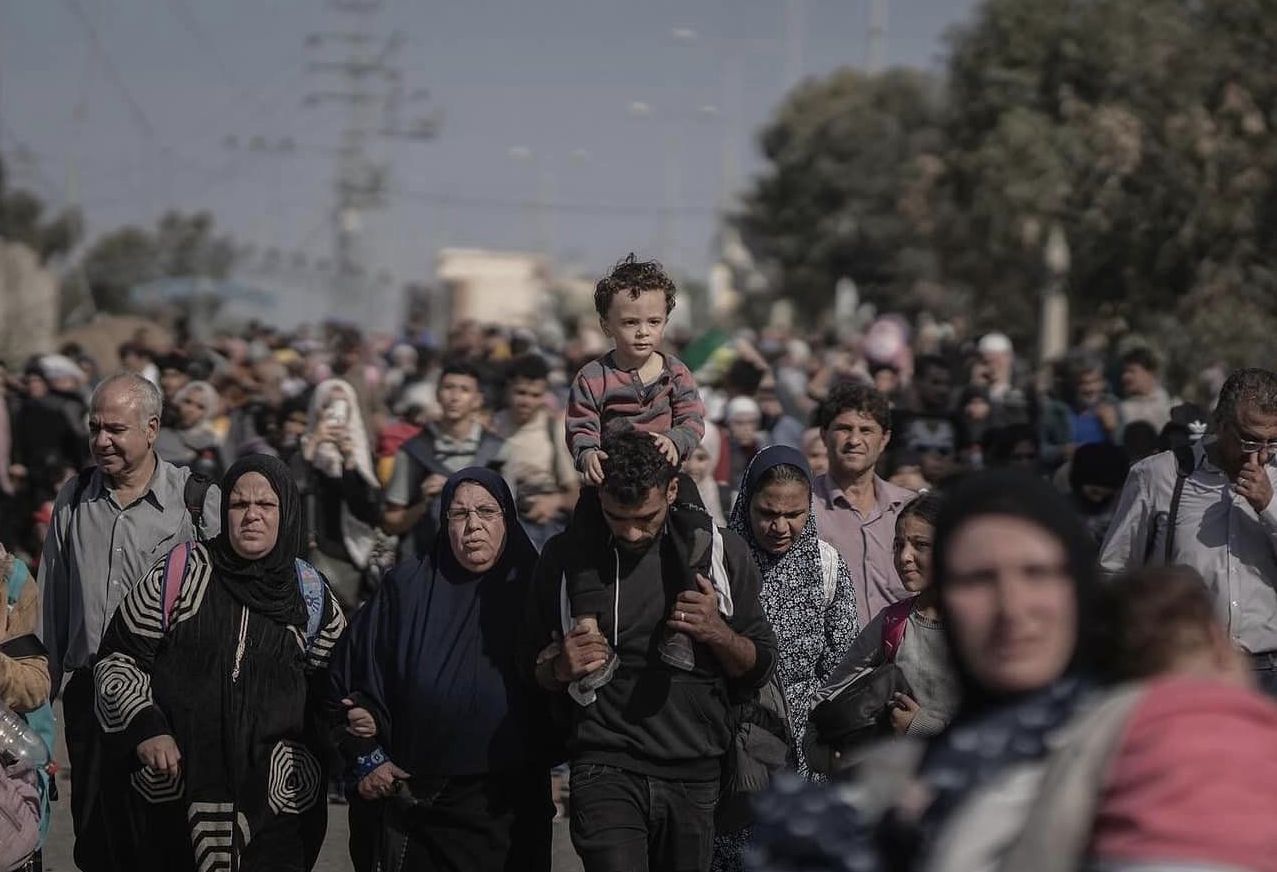“We are now rolling out the Gaza Nakba… Gaza Nakba 2023. That’s how it’ll end”. This was a description provided by Avi Dichter, Minister of Agriculture and former Director of the Israel Security Agency (Shin Bet), of the current campaign in an interview on Israel’s Channel 12. Dichter deflected the presenters’ repeated questions, whether this was a temporary situation and whether the refugees currently leaving Gaza City and the northern Gaza Strip would be able to return. Instead, he explained in an authoritative tone that Gaza City represents “only” one-third of the total area of the Strip, and that it has “only” two refugee camps.
We didn’t need Dichter’s expert analysis to see the specter of the Nakba looming in the huge convoys of exhausted and devastated Gazans making their way south. Among them were elderly men and women who had fled to the south before, as children, during the 1948 Nakba. Even south of Wadi Gaza, the refugees cannot expect any relief from the shelling and bombing. Reports from their so-called refuge indicate severe shortage of food, water, and medicine, overcrowding and epidemics. These conditions may take a heavier toll than the bombings. The numbers of both displaced persons and casualties already exceed those of the 1948 Nakba, and Israel’s campaign is still in full swing.
Representatives speaking for the Israeli regime blame everything on Hamas and its crimes against Israeli citizens in the October 7 attack. Obviously, however, massacre and kidnapping cannot justify an even greater massacre and ethnic cleansing. Instead of a swift negotiation to release the PoWs and the kidnapped citizens held hostage, the Israeli government prefers to risk their lives with every bombing for over a month now. In doing so, it clearly prioritizes causing as much death and destruction in Gaza over the life, security and wellbeing of Israeli citizens.Simultaneously, some leading members of the government and coalition do not make a secret of their intent to empty Gaza of Palestinians and replace them with Israeli settlements. Some pretend this is an operational requirement, thereby blurring their true aims – again, like in 1948 – and taking advantage of the pain and shock experienced by Israeli society in the aftermath of October 7.
Another Israeli security expert, former Head of the National Security Council Giora Eiland, stated on the day after the attack: “If we want to ever see the hostages alive, the only way is to create a severe humanitarian crisis in Gaza. When international organizations cry out about a humanitarian crisis in Gaza and about bodies piling up in the hospital that cannot treat them, we will come back and say, ‘we’ve no problem solving Gaza’s real problems, but first give us back our hostages’.”
We are currently witnessing this outrageous statement materializing on the ground – Gaza is indeed in the midst of an unprecedented humanitarian crisis. This is the time to remember that “solving Gaza’s real problems” has never been on the agenda of this government – or any Israeli government, for that matter. On the contrary, decades of violence have only worsened the situation and pushed every possible solution out of sight and out of mind.
For many thousands, it’s already too late. For those who are still living, for children on both sides and for the sake of future generations, we must assume responsibility. An immediate cease fire to stop the killing is a first and necessary step. An exchange of prisoners and abductees, as part of a comprehensive deal, can be the second step on the way to reconciliation based on full recognition, justice and the healing of wounds. The way there is very long, and every moment the first step is delayed can only mean greater pain and suffering. Things can be different – they have to be. A safe and peaceful life in a just society is still possible for all people living between the Jordan and the Sea and all refugees wishing to return.



